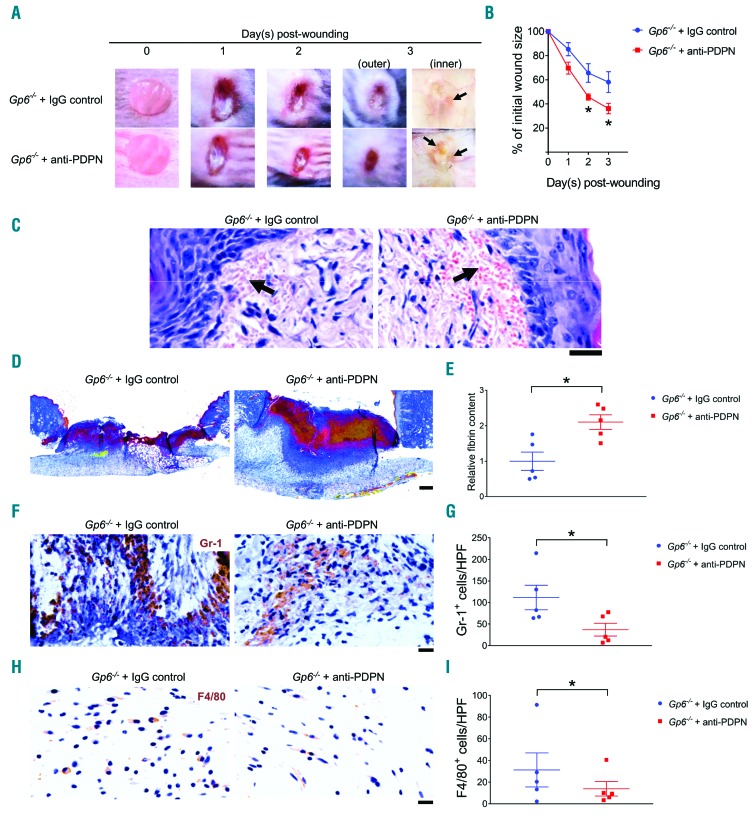Figure 8.
Anti-podoplanin antibody injection in Gp6−/− mice (Gp6−/− + anti-PDPN) simulates the accelerated phenotype of skin wound repair observed in DKO mice. (A) Macroscopic appearance of wound at indicated time points. Arrow points to intra-skin bleeding around the wound at day 3 post injury. (B) Changes of wound size over 3 days post injury (n=5). (C) Hematoxylin & Eosin staining at day 3 post-injury (n=5). Arrow points the bleeding into surrounding skin. Scale bar = 20 μm. (D) Martius scarlet blue staining of skin wound at day 3 post injury. Red: old fibrin, blue: collagen, yellow: red blood cells/fresh fibrin. Scale bar = 200 μm. (E) Quantification of fibrin content (red) in the wound at day 3 post injury (n=5). (F) Staining of neutrophils (Gr-1; brown) in wound area at day 3 post injury. (G) Quantification of neutrophils (Gr-1+ cells) in wound area at day 3 post injury (n=5). (H) Detection of macrophages (F4/80 staining; brown) in wound area at day 3 post injury. (I) Quantification of macrophages (F4/80+ cells) in wound area at day 3 post-injury (n=5). All graphs are presented as mean±Standard Error of Mean. Kinetics of wound closure (B) are analyzed by two-way ANOVA with Bonferroni’s multiple comparison test. Other parameters are analyzed by Student t-test. *P<0.05.

